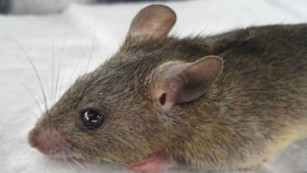3rd secret of Fatima (Epidemics): Seven reasons we’re at more risk than ever of a global pandemic
Fr. Martin who read the real third secret of Fatima and this ongoing apostasy since Vatican 2 en route to the Apsotate Church.
"...because
Fatima is a very apocalyptic message. It says that no matter what
happens there are going to be terrible wars, there are going to be
diseases, whole nations are going to be wiped out, there are going to be
3 days darkness, there are going to be epidemics that will wipe out
whole nations overnight (great culling), parts of the earth will be washed away at sea
and violent tornadoes and storms. It's not a nice message at all."
It could take just one cough, one kiss, one touch or even one bite to change not only your life, but the lives of everyone around you -- and for months or even years.
In most cases, the closer those people are to you, the greater the risk. But it isn't always that simple.
The risk at hand: an infectious outbreak.
Public
health experts believe we are at greater risk than ever of experiencing
large-scale outbreaks and global pandemics like those we've seen
before: SARS, swine flu, Ebola and Zika.
More than 28,000 people were infected
during the 2014-16 Ebola epidemic, with over 11,000 deaths. And as of
March 10, 84 countries have reported Zika transmission. That disease was
discovered in the 1940s, but had its first outbreak in 2007 in Micronesia, and more recently began spreading toward the end of 2015.
Every time, the infection's arrival is unexpected and its scale unprecedented, leaving the world vulnerable.
Experts are unanimous in the belief that the next outbreak contender will most likely be a surprise -- and we need to be ready.
"We're
only as secure in the world as the weakest country," said Jimmy
Whitworth, professor of international public health at the London School
of Hygiene & Tropical Medicine. With so many health systems and
economies in a fragile state, this means we are far from secure.
"Infectious
diseases respect no boundaries," he said. The World Health Organization
is alerted to hundreds of small outbreaks every month, he noted, which
it investigates and uses to predict the chances of a bigger problem.
"There are little clusters of outbreaks occurring all the time, all over the place," Whitworth said.
But
with infections disregarding borders and their battle lines against
humans drawn, he believes the way we live today is what opens us up to
risk.
"(Many) aspects of modern life put us at more risk. We are more ready than before," he points out, highlighting the International Health Regulations Global Outbreak Alert and Response Network and countries with national rapid response teams -- such as the United States, UK and China -- ready to tackle any emergency.
"But the stakes keep getting raised," he said. Here's why.
1. Growing populations and urbanization
The
facts around urban living are simple: You live, eat, work and move
closer to people than in any rural setting, and with this comes greater
opportunity for disease to spread through air, mosquitoes or unclean water.
As populations grow, so will the number of city-dwellers, with the United Nations predicting that 66% of the global population will live in urban areas by 2050.
More people in cities can
"put a strain on sanitation," said David Heymann, head of the Centre for
Global Health Security at the think tank Chatham House. Beyond people's
close proximity, "this is a second source of infection," he said, and a
third is increased food demand, causing farmers to grow more food, with
more animals, making them likely to live closer to those animals as
well.
Animals are reservoirs for
many diseases, including cattle for tuberculosis and African sleeping
sickness (trypanosomiasis) and poultry for avian flu.
2. Encroaching into new environments
As
numbers of people grow, so does the amount of land needed to house
them. Populations expand into previously uninhabited territories, such
as forests. With new territories comes contact with new animals and,
inevitably, new infections.
For one example, "Lassa fever occurs because people live in the forest and destroy it for farming," Heymann said.
Lassa fever
is a viral disease spread by contact with the feces of infected
rodents. It can cause fever and hemorrhaging of various parts of the
body, including the eyes and nose. Person-to-person transmission is also
possible, albeit less common. Outbreaks generally occur in West Africa,
with higher than expected rates in Nigeria since 2016.
Heymann
explains that Lassa is one example of people living near forest
environments where infected rodents reside, but destruction of those
forests for agriculture leaves the animals nowhere to go -- other than
humans' homes.
"The rodents that live there can't get food and go into human areas for food," he said.
CLICK HERE FOR THE REST:
Related:
Dr. Francis Boyle "3rd Secret of Fatima & BioTerrorism"

